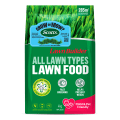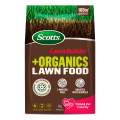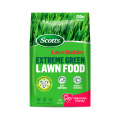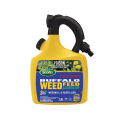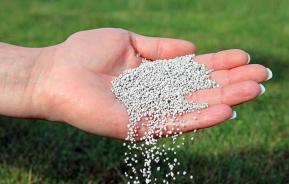
All You Need to Know About Lawn Fertilisers
Ever stood in front of the fertiliser aisle at your local hardware or garden centre and felt like you were staring into a jungle of options? Granules, liquids, slow-release, fast-acting… and every bag promising the greenest lawn on the block.
We get it—it’s a lot.
That’s why we’ve whipped up a simple guide to help you cut through the confusion and find the fertiliser that’s just right for you (and your lawn). Whether you're chasing lush weekend picnic vibes or a backyard cricket pitch, we’ll help you choose the granulated or dry fertiliser that’ll get your grass glowing.

Conventional Lawn Fertilisers:
Let’s talk about the classics.Conventional or traditional lawn fertilisers are often the most basic and budget-friendly options available. However, they are generally not considered the most effective choice for long-term lawn health.
What you’ll notice:
- Crystalline or powdered form
- High application rates
- Short-term nutrient delivery
- Rapid growth followed by quick decline
- Frequent reapplication required
These fertilisers typically release their nutrients all at once when watered in, which can result in significant nutrient runoff into drains and waterways. Because the lawn can only absorb a limited amount of nutrients during this brief window, much of the fertiliser is lost.
Regular use—often every four to six weeks—can negatively impact soil health and disrupt its natural chemistry over time.
Slow-Release Lawn Fertilisers
Slow-release lawn fertilisers offer a more advanced approach to feeding your lawn, delivering nutrients gradually over time—often for up to three months.
Key features:
- Steady, controlled nutrient release
- No nutrient surge after watering
- Lower application rates
- Typically only three applications per year
When using a high-quality product like Scotts Lawn Builder, you can expect consistent growth and greening throughout the life of the application. There’s no sudden burst of growth, and importantly, no nutrient runoff—just reliable performance and healthier soil.
In contrast, cheaper slow-release options may front-load nutrients, causing an initial growth spurt that quickly fades. This can lead to uneven results and less sustained lawn health.
Natural or Organic Lawn Fertilisers
The term organic can be a little misleading when it comes to fertilisers.
For example, traditional blood and bone fertilisers contain high levels of natural materials and are often labelled as organic. Technically, though, they’re better described as organic-based fertilisers.
What makes a fertiliser truly organic?A genuine organic fertiliser is one that’s certified 100% organic. The easiest way to check? Look for the Australian Organic Certified logo on the packaging.
Fertilisers generally fall into three categories:
- Organic (natural)
- Synthetic (manufactured)
- Blended – a mix of both
When it comes to lawn care, Scotts Lawn Builder Plus Organics Lawn Food & Soil Improver offers the best of both worlds. It combines the reliable performance of a premium slow-release fertiliser with the added benefits of natural ingredients like seaweed, fish, manure, and bio-stimulants.
A quick tip:
Fertilisers with high nutrient runoff aren’t just tough on the environment—they’re tough on your wallet too. If your lawn can’t use the nutrients, they’re essentially money washed down the drain.
What Is NPK in Lawn Fertiliser?
Choosing the right lawn fertiliser doesn’t require a science degree—someone with one has already done the hard work of balancing the nutrients for you. But it’s helpful to understand what those letters on the label actually mean.
NPK stands for:
N = Nitrogen. Encourages lush, green leaf growth. That’s why most lawn fertilisers have a high nitrogen content.
P = Phosphorus. Supports root development and improves disease resistance. It’s also key for flowers and fruit, which is why lawn fertilisers typically contain very little.
K = Potassium. Boosts overall plant health, helping your lawn resist disease and stay vigorous.
And sometimes you’ll see:
S = Sulphur. Promotes greening by helping plants produce chlorophyll—the pigment that gives leaves their colour. It also helps with nutrient uptake.
Fe = Iron. Keeps your lawn green and prevents yellowing. While iron is usually present in soil, it can become unavailable if the pH isn’t slightly acidic (between 5 and 6.5).
